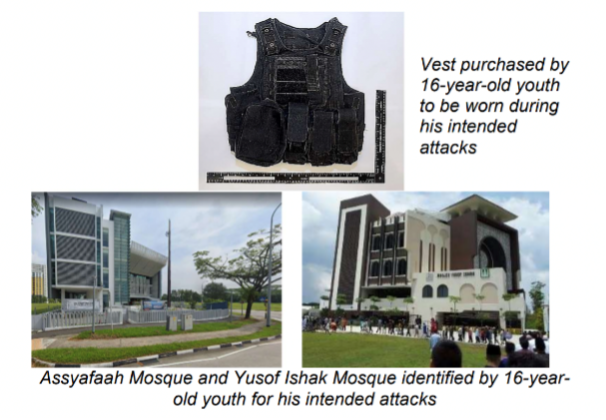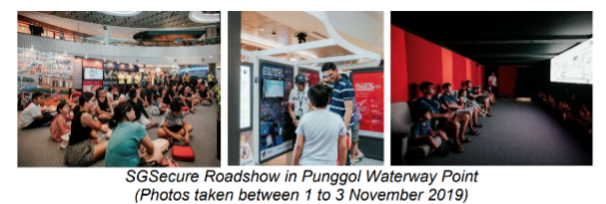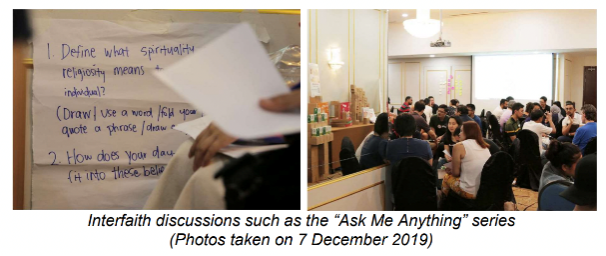The Threat of Self Radicalisation
The Threat of Self-radicalisation
Today, there is an increasing number of terrorist attacks being carried out by self-radicalised individuals and lone wolf actors on everyday venues, using readily available objects such as knives and vehicles. The radicalised individuals are also significantly younger, have no prior terror links, and are influenced by extremist propaganda on social media.
Groups such as The Islamic State in Iraq and Syria (ISIS) have used social media to spread their ideology. The proliferation of extremist content online means easy access to such material, especially in a country as digitally connected as Singapore. The result is that some individuals in Singapore have become self-radicalised after being exposed to such content.
Self-radicalisation takes place when individuals consume such propaganda and start to believe in the ideology behind them. They then start to act on the ideology, which often calls for violent and physical attacks against specific institutions, people or groups. These can include innocent citizens, groups of a particular religious faith or even the government. Through the years, a small number of Singaporeans influenced by ISIS teachings have even travelled to Syria to participate in the armed conflict there.
Self-radicalisation presents an increasing challenge to the authorities, especially in identifying radicals who plot in secret and dealing with those who are radicalised within a short span of time.
Examples of Self-radicalisation in Singapore
In December 2020, a 16-year-old Singaporean youth was detained under the Internal Security Act (ISA) after making plans to attack Muslims at two mosques in Singapore. This was the youngest person then to be detained for terrorism-related activities and the first detainee who had been influenced by far-right extremist ideologies. The Secondary 4 student was influenced by the 2019 terror attacks at two mosques in Christchurch, New Zealand, having watched the livestreamed video of the attack and read the manifesto of the perpetrator.
 Image: Singapore Terrorism Threat Assessment Report 2021, MHA.
Image: Singapore Terrorism Threat Assessment Report 2021, MHA.
A 22-year-old Singaporean became the first woman to be detained under the ISA for radicalisation in 2017. She was a contract infant care assistant with a PCF Sparkletots Preschool, and began to be radicalised in 2013 by online ISIS propaganda. She had been planning to travel to Syria with her young child and was looking for an ISIS supporter to marry.
A 20-year-old Singaporean was detained in March 2021. Driven by his radicalised views of the Israel-Palestine conflict, he had made plans and preparations to conduct a knife attack on Jews at a synagogue in Singapore. He had been enraged by the Israel-Palestine conflict and made plans to travel to Gaza to join the fight against Israel.
 Image: Singapore Terrorism Threat Assessment Report 2021, MHA.
Image: Singapore Terrorism Threat Assessment Report 2021, MHA.
In August 2020, a 34-year-old Singaporean housewife and former religious teacher was issued with a Restriction Order (RO) under the ISA after she was found to have been radicalised by her husband, and had supported his intentions to join and fight for ISIS in Syria. In April 2021, she was detained after an escalation in her radical behaviour and involvement in activities prejudicial to Singapore’s security.
Apart from Singaporeans, cases of radicalisation have also been detected among foreigners working in Singapore. Since 2015, more than 40 Bangladeshi workers and 21 foreign domestic workers were found to have been radicalised. These multiple instances of self-radicalisation show that it is not limited to any religion or ethnic group. It can also take place within different age groups and among people of different socio-economic statuses. With self-radicalisation, the terror threat is far more insidious now and may reside within the community. It may take more than the efforts of law enforcement agencies to uncover terror plots.
To this end, the role of a vigilant citizenry is vital. The Home Team conducts roadshows to reach out and engage the community to learn about the terrorism threat and watch for signs of radicalisation within members of their own communities, such as the consumption of radical materials, posting of such content on their social media and withdrawal from social life.
 Image: Singapore Terrorism Threat Assessment Report 2021, MHA.
Image: Singapore Terrorism Threat Assessment Report 2021, MHA.
As radicalisation is not limited to any religion or ethnic group, Singapore has also moved to deepen inter-religious and cross-cultural understanding as well as re-integrate those who have been radicalised back into society with the support of community and religious leaders. Additionally, the government has taken swift action to counter hate speech and moved to ban religious speakers espousing views that incite hatred for another race or religion. For instance, the Government banned a Christian preacher from preaching in Singapore following inappropriate remarks about Muslims he made in a sermon in Singapore.

The Community’s Response to Terrorism and Self-radicalisation: SGSecure
In addition to government measures and public engagement, each Singaporean can also play a part to safeguard Singapore and our way of life against the threats of terrorism and self-radicalisation. One way to do so is through the SGSecure movement.
It highlights the three core actions that every one of us can do in the fight against terrorism:
• Staying alert to prevent a terror attack and keeping our family, friends and ourselves safe in the event of a terror attack. This includes staying vigilant to signs that someone around us may have become radicalised. Family, friends and colleagues are best placed to notice changes in an individual. Early reporting is critical to allow authorities to intervene in a timely manner and prevent such persons from harming themselves and others.
• Staying united through building strong bonds with our friends and neighbours in the community, and cherishing the racial and religious harmony in Singapore.
• Staying strong and resilient as individuals and as a community, and be ready to help one another and bounce back quickly after a terror attack.
Members of the public can also contribute to the safety and security of Singapore by joining the SGSecure Responders’ Network (SRN) as community responders. SGSecure Responders are encouraged to stay alert and report suspicious items or behaviour, including signs of radicalisation; help others in distress, such as in cases of cardiac arrest or minor fires; as well as to counter the spread of misinformation during a crisis by sharing information only from credible or official sources. Everyone will be able to contribute to the safety and security of Singapore in their own way.

